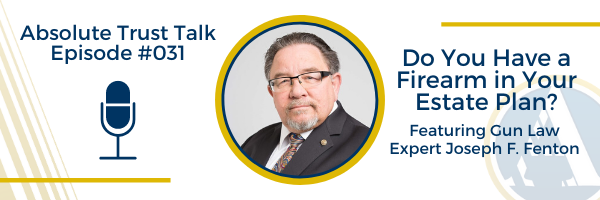Lost or Undiscovered Assets Pose Problems for the Administration of an Estate
When Jonathan Morgan was named the executor of his father’s estate, he thought he had an easy task ahead of him. After all, his father, Harold, had assured him that he had carefully listed every asset he owned on a sheet of notebook paper attached to his will.

“All you have to do is submit everything to the probate court and you’re golden,” Harold said with glee.
Unfortunately, upon Harold’s death, all Jonathan found was his father’s will, buried in a kitchen cupboard, with a small slip of paper attached. It said:
- Bank accounts
- Pension plan
- IRA
- Life insurance
- Crutchfield farm
- Mother’s jewelry
- House
- Rental property
No further information was provided. With the exception of Harold’s home, Jonathan had no clue where to begin his search for Harold’s assets.
One of the primary responsibilities of the executor of an estate is to identify and inventory the deceased’s assets. Ideally, the testator has taken the time to detail all of those assets, providing estimated values, locations, and other information about ownership. When such information does not exist, however, it is incumbent on the executor to search for and locate those assets.
Jonathan began the process by carefully searching Harold’s house, looking in closets and cupboards, under beds and mattresses, in drawers and bookshelves, through multiple boxes stored in the basement of Harold’s home, even in the pockets of Harold’s clothing. Jonathan also searched Harold’s car, garage, and tool shed. Eventually, he found a few personal papers, a receipt for payment of an insurance premium, some stock certificates, and an unlocked home safe, which contained four years’ worth of bank statements for a checking account and a passbook for a savings account. Jonathan also found a key to a safe deposit box in one of Harold’s shoes.
After calling numerous banks, Jonathan was able to identify the location of the safe deposit box, and per state identification requirements, opened the box and found three prior wills, as well as a jewelry case, which he assumed to be his mother’s jewelry. After reviewing the prior wills, Jonathan found a more detailed list of Harold’s assets but was unable to identify the location of an IRA and pension plan, and three more bank accounts.
However, Jonathan still had no clue as to the location of any rental properties or the property identified as the “Crutchfield farm.” After an unsuccessful search of records in the county in which Harold lived, Jonathan hired a local private investigator to broaden the search. The P.I. suggested that the search also include:
- Any loan documents that listed Harold as either the debtor or the lender.
- Unclaimed assets held by state or the federal governments, such as bank accounts, real estate, or tax refunds.
- S. Treasury securities.
- Unclaimed insured deposits held on behalf of account holders at failed financial institutions.
- Pension/retirement plans funded by defunct or bankrupted companies, as well as 401 (k) plans that may have been lost in job transitions.
- Additional life insurance policies.
The private investigator explained that multiple websites now existed for the search for such assets and the information could be easily accessed by someone with legal authority, such as an executor holding Letters Testamentary (the authority granted by the probate court to administer an estate).
While the private investigator began his search, Jonathan asked his aunts and uncles, as well as his siblings, if they were aware of any properties Harold owned. He soon discovered that two of his aunts were living in homes Harold owned, but rented to them. Jonathan also learned that the “Crutchfield Farm” was in fact the “Kutzfeld Farm,” a property Harold had sold shortly before his death.
After more than six months, Jonathan finally had what he felt was a complete list of all of Harold’s assets and submitted it to the probate court along with a list of debts and liabilities. After payment of all outstanding debts, Jonathan was then able to distribute Harold’s assets as instructed by the will and settle the estate.
While lists of assets and liabilities are an important attachment to wills, some testators either ignore them or fail to fill them out completely. This can significantly delay the probate of an estate, or in some cases, require the reopening of an estate when assets are newly discovered. The best approach is to keep an updated list of your assets and liabilities attached to your will, as well as a copy of that list with relevant paperwork attached and store it in a location known to the executor of your estate.
At a minimum, the following assets should be included in your inventory:
- Personal property of value, such as cash, financial accounts, jewelry, art, antiques, and intellectual property.
- Real estate, including homes, vacation homes, rental properties, and real estate held in trust or in a business entity.
- Business interests, including shares held in a corporation, limited liability company, or partnership.
Creating an estate plan that clearly defines your desires regarding the distribution of assets upon your death is really only the first step. Without a complete inventory of those assets, your wishes will not be completely fulfilled.
It is very important to state your instructions regarding your estate clearly and accurately in your will, and vital that the list of assets and liabilities be comprehensive and informative.

